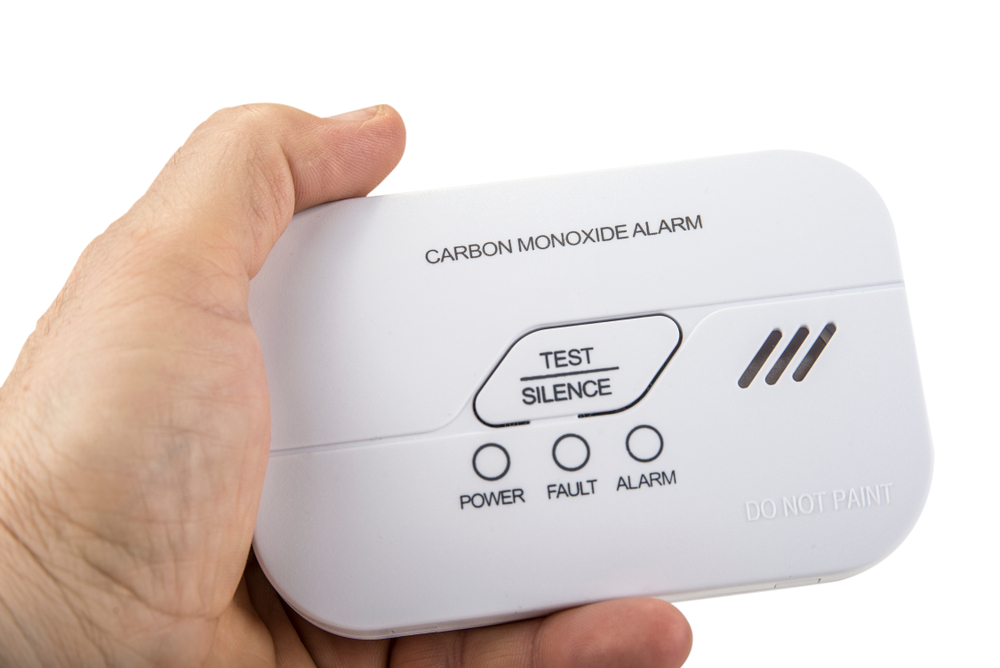Carbon monoxide poisoning has emerged as a serious yet often overlooked danger for travelers staying in hotels and vacation rentals worldwide. Recent high-profile fatalities have drawn attention to regulatory gaps that leave guests vulnerable to this invisible threat. While travelers meticulously pack sunscreen, medications and travel adapters, many overlook the potentially lifesaving portable carbon monoxide alarm that could prevent tragedy during otherwise joyful vacations.
Recent fatal incidents highlight global safety concerns
The death of 14-year-old Miller Gardner, son of former Yankees player Brett Gardner, sent shockwaves through both the sports community and travel industry after carbon monoxide poisoning claimed his life in a Costa Rican hotel room. This heartbreaking incident occurred when the family was simply enjoying what should have been a memorable vacation experience.
In February 2024, three American women died from carbon monoxide exposure while staying at a vacation property in Belize. Authorities determined a malfunctioning water heater located near their sleeping quarters released the deadly gas overnight, giving them no chance to recognize the danger or escape.
A December incident in Georgia proved even more devastating when twelve people lost their lives due to carbon monoxide seeping upward from a restaurant into sleeping areas above. The victims included multiple families who had no warning of the deadly gas accumulating as they slept.
These tragedies represent just a fraction of documented cases. Safety researchers estimate approximately 1,498 deaths and 38,657 injuries from carbon monoxide poisoning have occurred in lodging properties worldwide over the past two decades. The actual numbers may be significantly higher due to misdiagnosis and inconsistent reporting practices.
Why carbon monoxide poses a unique danger to travelers
Carbon monoxide presents exceptional risks because it remains completely undetectable without specialized equipment. The colorless, odorless gas gives victims no sensory warning of its presence, unlike smoke or natural gas which often have detectable odors or visible indicators.
The initial symptoms of carbon monoxide exposure mimic common travel ailments, leading to dangerous misdiagnosis. Headaches, dizziness, nausea and fatigue often get attributed to jet lag, food poisoning, altitude sickness or general travel exhaustion. This confusion delays crucial treatment and keeps victims in dangerous environments longer.
Dr. Kathy LeSaint, associate professor of emergency medicine at a leading medical center, notes that carbon monoxide poisoning becomes particularly dangerous during sleep when victims cannot recognize their worsening symptoms. The gas binds to hemoglobin in the bloodstream about 200 times more effectively than oxygen, progressively reducing the body’s ability to transport oxygen to vital organs and tissues.
5 major sources of carbon monoxide in travel accommodations
Malfunctioning water heaters represent the leading cause of carbon monoxide incidents in hotels and vacation properties. These units often operate continuously to meet guest demands and may be located in poorly ventilated mechanical rooms near sleeping quarters, creating perfect conditions for gas accumulation when failures occur.
Improperly maintained heating systems pose significant risks, particularly in regions with colder climates or seasonal temperature variations. Furnaces, boilers and space heaters that burn fossil fuels produce carbon monoxide during normal operation, but damaged heat exchangers or ventilation blockages can redirect this gas into living spaces rather than outside.
Portable generators used during power outages create extreme danger when operated too close to buildings. These devices produce concentrated carbon monoxide in their exhaust and have caused numerous fatalities when placed near windows, doors or air intake systems during weather emergencies affecting hotels.
Gas-powered kitchen equipment in restaurants located within or adjacent to lodging facilities has caused multiple mass casualty incidents. Incomplete combustion from commercial stoves, ovens and water heaters can release carbon monoxide that travels through ventilation systems, walls, floors and ceilings to reach guests in nearby rooms.
Vehicle exhaust entering buildings represents another significant hazard, particularly in properties with attached or underground parking facilities. Improper ventilation designs or mechanical failures in exhaust systems can allow carbon monoxide from idling vehicles to enter guest areas through air ducts or structural gaps.
The regulatory gap leaving travelers vulnerable
No federal regulations in the United States mandate carbon monoxide alarms in hotels or vacation rentals, creating a dangerous patchwork of protection for travelers. Only 14 states currently require these devices in lodging properties, with varying levels of enforcement and compliance verification.
International regulations show even greater inconsistency. Many popular tourist destinations have no carbon monoxide safety requirements whatsoever for accommodations. Even in regions with nominal regulations, enforcement mechanisms often prove inadequate, particularly for smaller properties and vacation rentals.
Major hospitality chains have begun implementing voluntary carbon monoxide alarm programs, but adoption remains incomplete. Industry surveys indicate approximately 70% of branded hotels in North America now include these devices, but independent properties, smaller chains and vacation rentals show significantly lower installation rates.
Selecting the right portable alarm for travel protection
Travel safety experts recommend dual-function devices that combine detection capabilities with audible alarms. Some products marketed as carbon monoxide detectors only provide visual readings without emergency alerts, making them less effective during sleep when most fatalities occur.
Low-level detection capabilities prove crucial for adequate protection. The most effective travel alarms can detect concentrations as low as 10 parts per million, providing early warning before levels become immediately dangerous. Standard residential alarms following UL 2034 standards may not activate until concentrations reach 70 ppm sustained over hours, potentially too late for vulnerable individuals.
Battery life and reliability should factor heavily into selection decisions. The best travel carbon monoxide alarms feature lithium batteries lasting 5-10 years, eliminating the need for frequent replacements during trips. Models with digital displays showing current carbon monoxide levels provide additional reassurance and allow travelers to monitor trends.
Compact size makes compliance with travel recommendations practical. Modern travel alarms weigh just a few ounces and occupy minimal space in luggage. Many feature wall-mounting options through built-in hangers or magnetic attachments, making temporary installation in hotel rooms simple.
Reputable manufacturers with established testing protocols offer the greatest reliability. Brands like Kidde, First Alert and X-Sense maintain rigorous quality control standards and offer travel-specific carbon monoxide alarm models with appropriate sensitivity and portability features.
Proper alarm placement maximizes protection
Experts recommend placing portable alarms at breathing height, approximately 5 feet above the floor. This position best detects carbon monoxide at the level where sleeping travelers would inhale it, providing the earliest possible warning.
The optimal location remains within 10 feet of sleeping areas but away from bathrooms or kitchens where steam and cooking fumes might trigger false alarms. For multi-room accommodations, placing the device in a central hallway serving bedrooms provides effective coverage.
Travelers should avoid hidden locations that might muffle alarm sounds. While discretion may seem appealing, placing devices inside drawers, closets or behind furniture significantly reduces their effectiveness in emergency situations.
Response protocols when alarms activate
Immediate evacuation represents the only appropriate response to carbon monoxide alarm activation. Unlike smoke detectors which might trigger from shower steam or cooking, carbon monoxide alarms activate specifically in response to the presence of this deadly gas.
Contacting property management from outside the building ensures both personal safety and proper response. Management should arrange professional inspection of potential carbon monoxide sources before allowing reentry, as the gas may originate from adjacent rooms or common mechanical systems.
Medical evaluation remains essential even for those feeling minimal symptoms. Carbon monoxide exposure effects can persist or worsen hours after leaving the contaminated environment, and proper treatment often requires specialized testing unavailable in many international locations.
As travelers pack for their next adventure, safety experts emphasize that portable carbon monoxide alarms represent perhaps the most critical yet overlooked item on preparation lists. This small device, weighing just ounces and costing under $50, could prevent devastating tragedies like those that have claimed too many lives in recent years.











